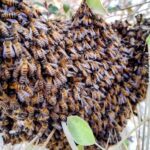Pest control in Frisco is never an easy task. Pests have plenty of opportunities to thrive due to rapid growth, diverse neighborhoods, and the changing weather. That is why controlling bugs and rodents can be more complicated than expected.
Several factors make pest control in this area especially challenging to deal with. But Romney Pest Control is always available to help homeowners handle the toughest infestation in the world. The company has been working to keep Frisco homes comfortable by focusing on solutions that match each property’s unique challenges. They understand how pests get in and why they sticking around. Then, they apply treatments that target the problem and set up lasting protection against invaders. Below are factors that make pest control challenging here:
Rapid Growth and Construction
Frisco’s continuous development creates ideal conditions for pests. Construction disturbs natural habitats. It drives rodents and insects to nearby homes in search of food and shelter. Pets can nest and breed in empty lots, construction debris, and new landscaping. The close proximity of homes makes it easier for infestations to spread from one property to another.
Seasonal Weather Patterns
Frisco residents experience hot summers, rainy springs, and mild winters. Different types of pests can invade homes every season. Mosquitoes, fire ants, and wasps can be more common during warmer months. Rainy periods create standing water that fuels mosquito activity and drives pests indoors. Mild winters allow rodents, termites, and spiders to remain active year-round instead of dying off.
Abundant Food Sources
Frisco’s suburban setting provides plenty of food for pests. Trash bins, outdoor pet food bowls, bird feeders, and backyard grills serve as attractants. They stay close and multiply when they find a reliable source of food. Rats and mice take advantage of leftover pet food. Ants and cockroaches thrive on crumbs and spills indoors. The availability of food makes it harder to eliminate pests completely.
Water and Drainage Issues
Mosquitoes need moisture to survive. Sadly, drainage problems in Frisco neighborhoods create the perfect conditions. Low-lying yards, clogged gutters, and poor grading can lead to puddles that don’t dry quickly. Sprinkler systems can also contribute when water collects around foundations or in garden beds. These wet areas provide breeding grounds that increase pest populations.
Dense Vegetation and Landscaping
Overgrown bushes and dense shrubs in Frisco give rodents and insects places to hide during the day. Mulch beds hold moisture that attracts termites and cockroaches. Flowerbeds near the foundation can become pathways for ants into the home.
Close Proximity of Homes
Many neighborhoods in Frisco feature homes built close together. This can make it easy for pests to travel from yard to yard. Ant colonies spread underground, and rodents move along fences. Also, roaches slip through shared walls in townhomes or duplexes. Pests from a neighbor’s home may still wander over, even if one homeowner keeps their property spotless. With this interconnectedness, pest control should be an ongoing effort.
Hidden Entry Points
Rodents, ants, and cockroaches can find tiny gaps in a home. They can slip through small cracks around doors, windows, and foundations. Roof rats climb along tree branches and wires to reach attics. Gaps around utility lines provide another pathway indoors. Sealing these openings is crucial in preventing invasion.
Persistent Pest Species
Fire ants rebuild mounds after treatment. German cockroaches reproduce at a rapid rate, making them difficult to eliminate without professional help. Termites often go undetected for years while quietly damaging wood structures. These persistent species make it harder for homeowners to manage infestations on their own.
Pet-Friendly Yards
Outdoor areas for dogs and cats often provide more opportunities for pests. Pet food bowls, water dishes, and shaded spots in the yard attract them. Fleas and ticks hitch rides on pets and spread indoors.



